The document explains exception handling in Java, describing exceptions as runtime errors that can disrupt the normal flow of a program. It categorizes errors into syntax, runtime, and logic errors, and further differentiates between checked and unchecked exceptions. Key concepts such as try-catch blocks, throw and throws keywords, and the role of finally blocks in ensuring code execution are also discussed.
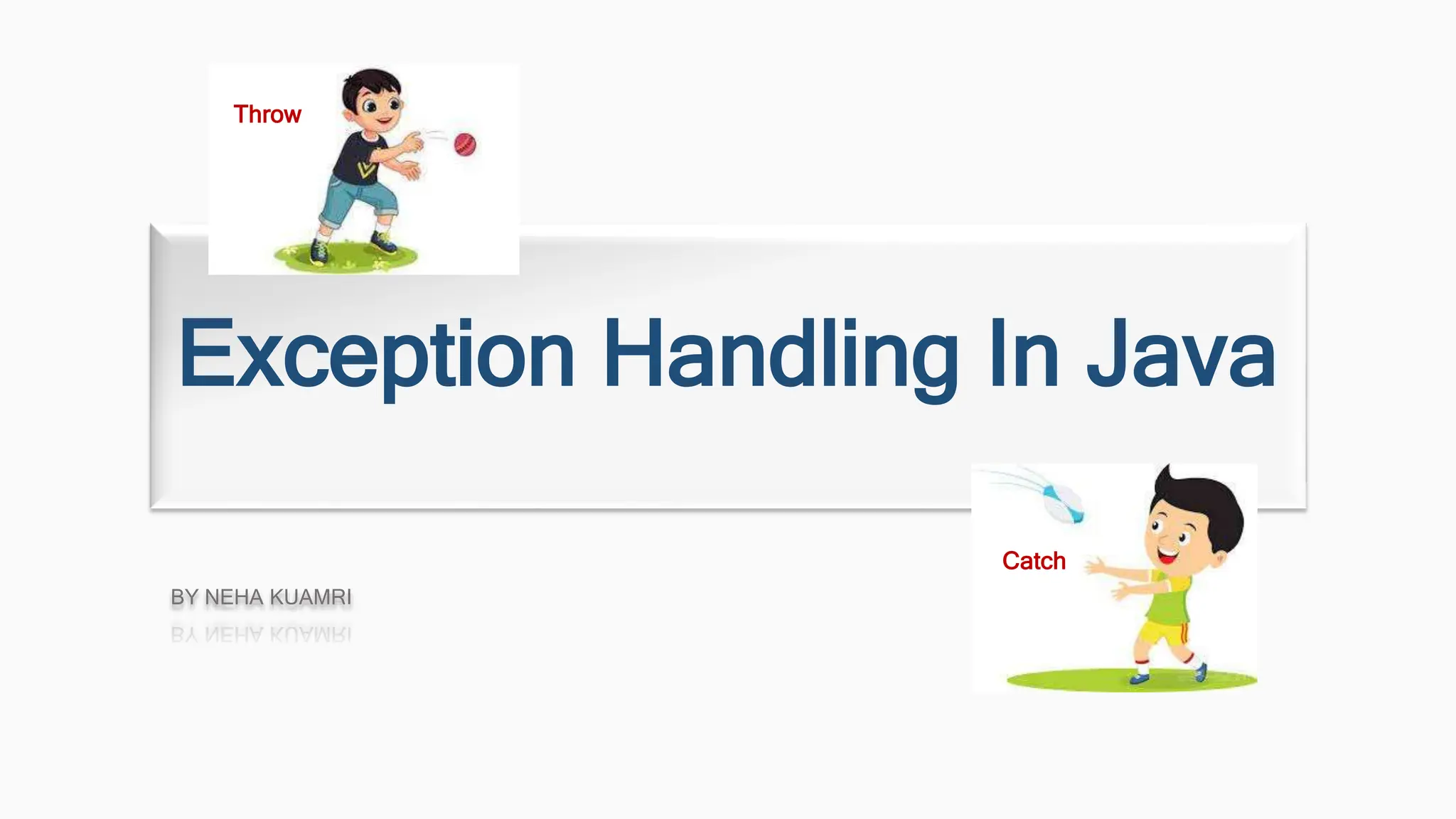
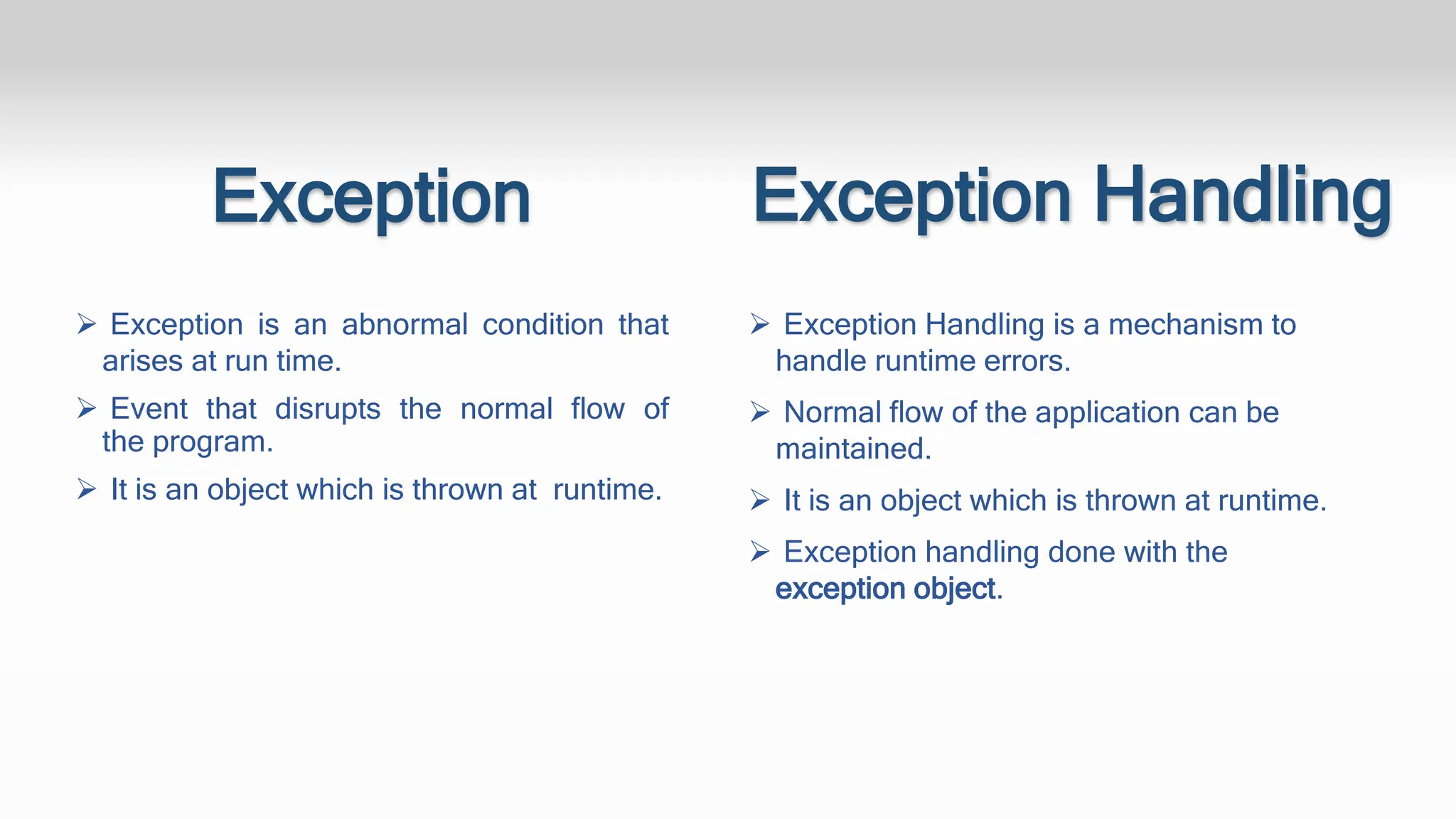
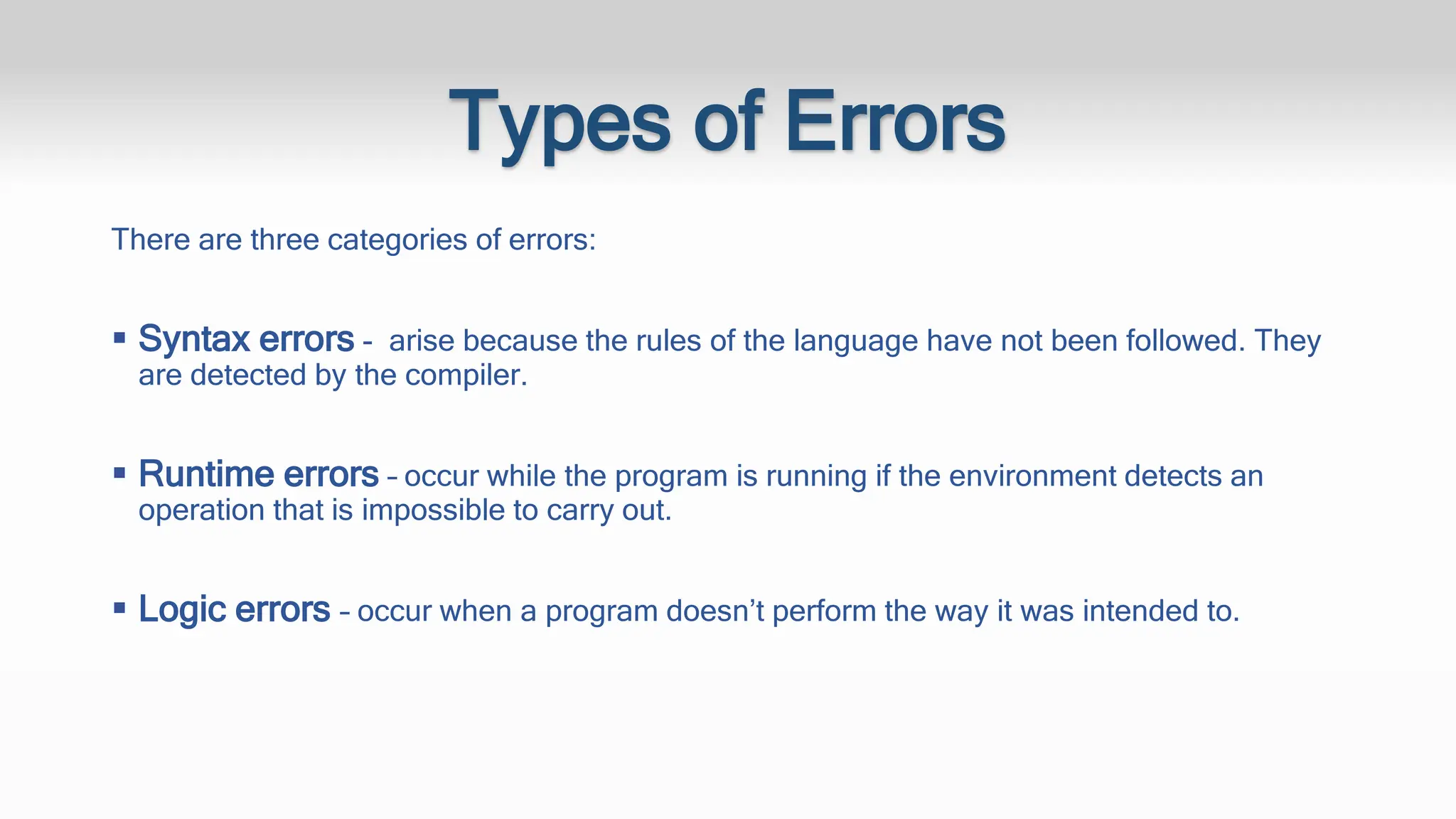
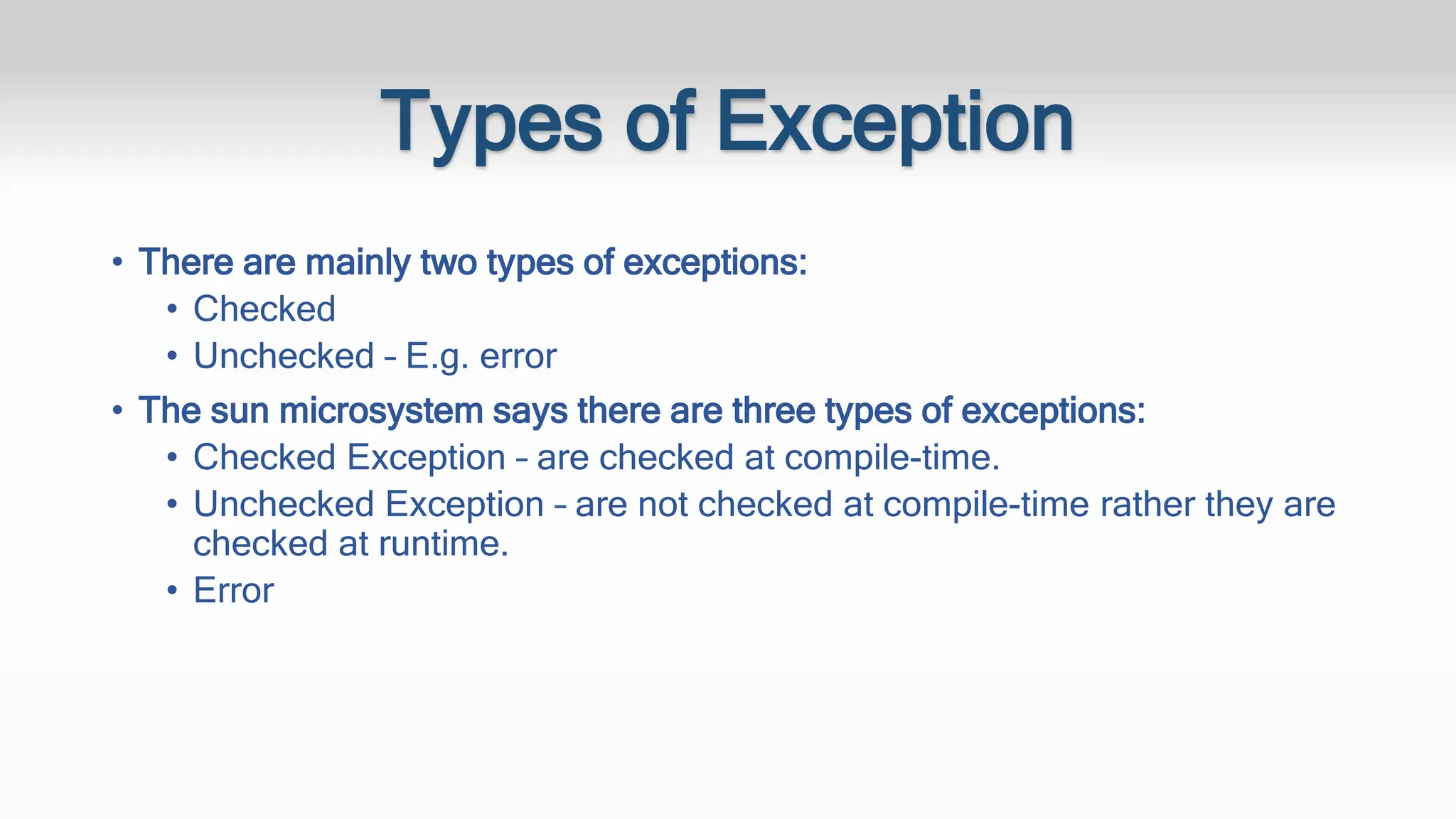
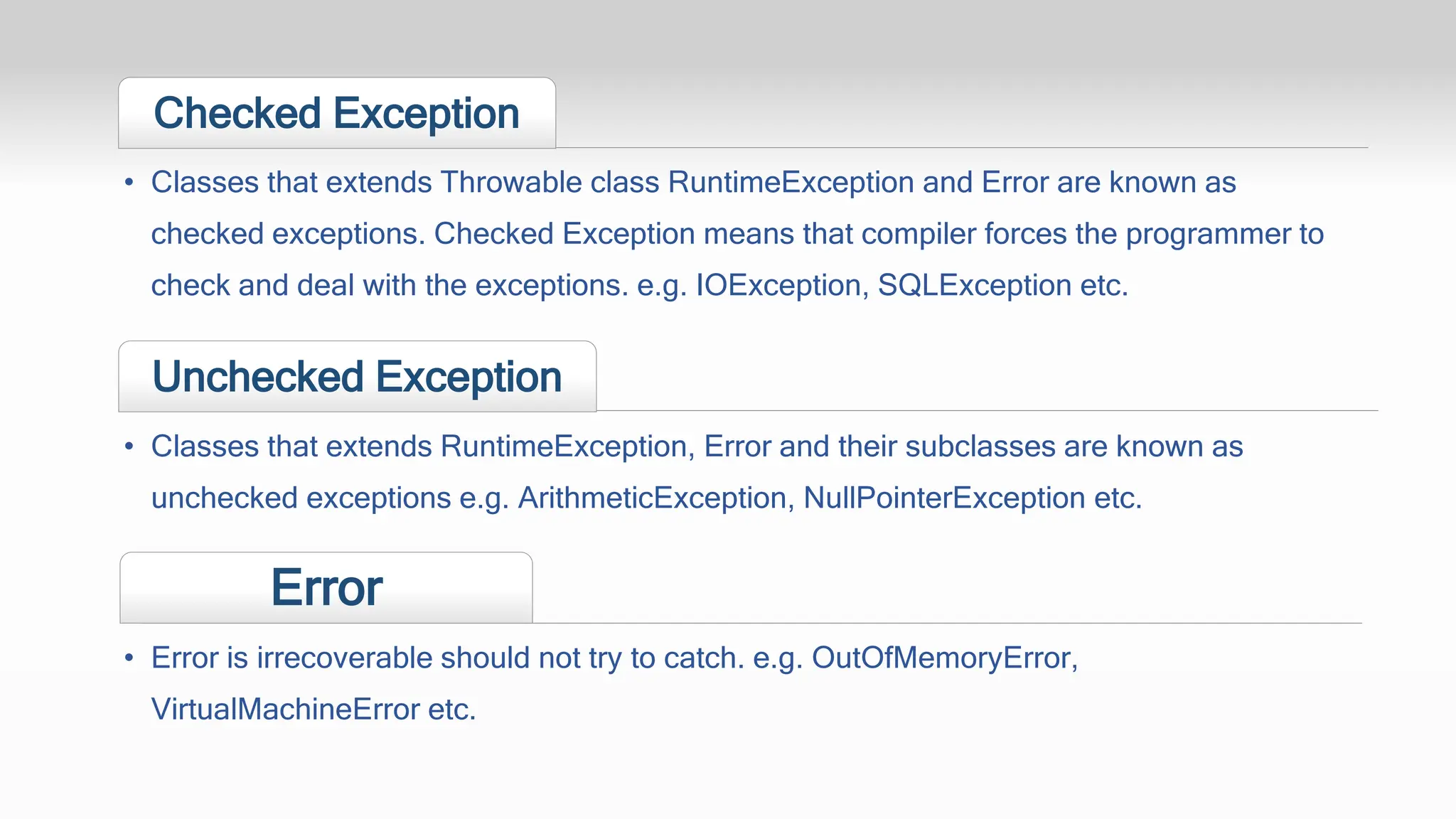
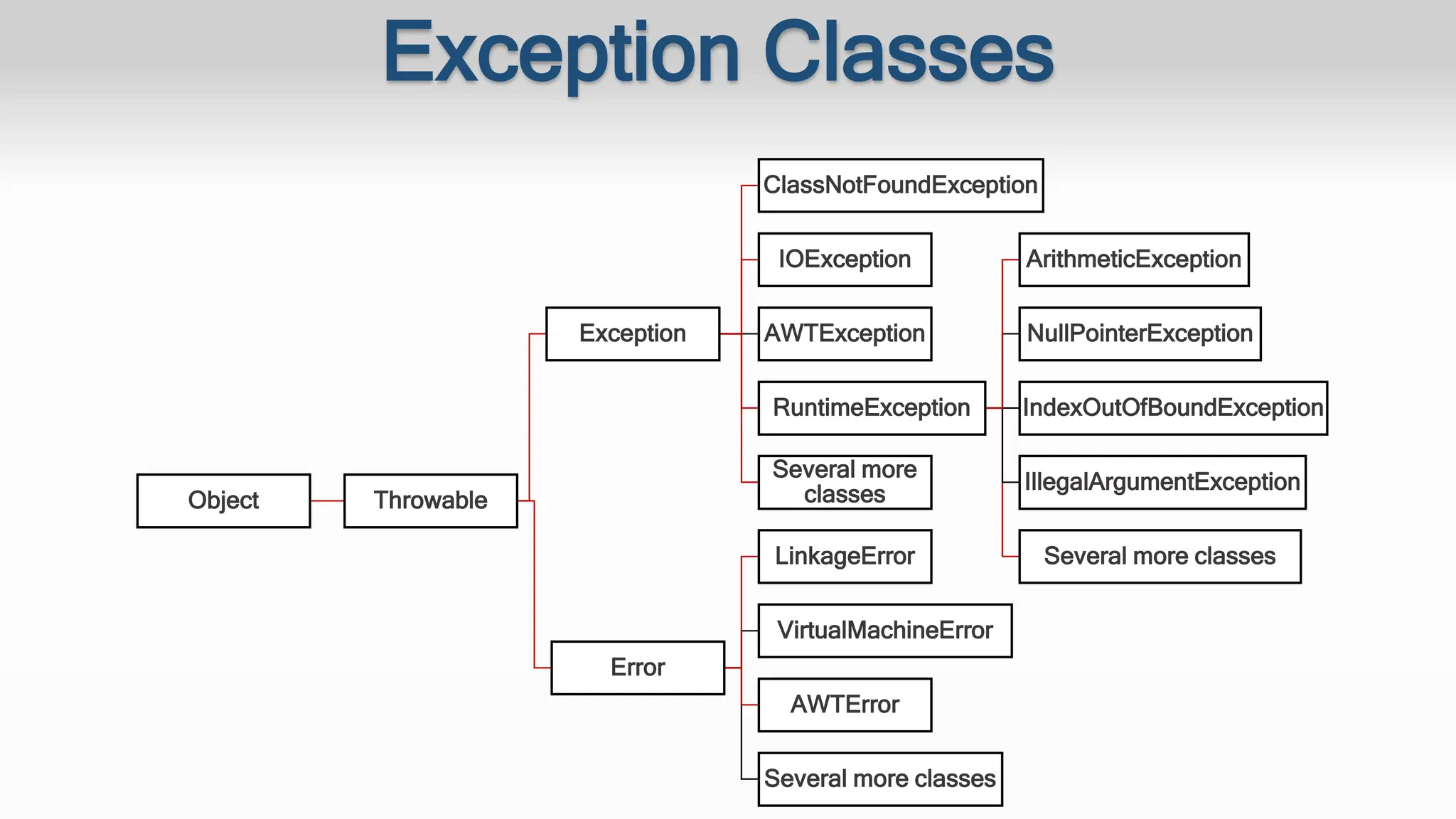
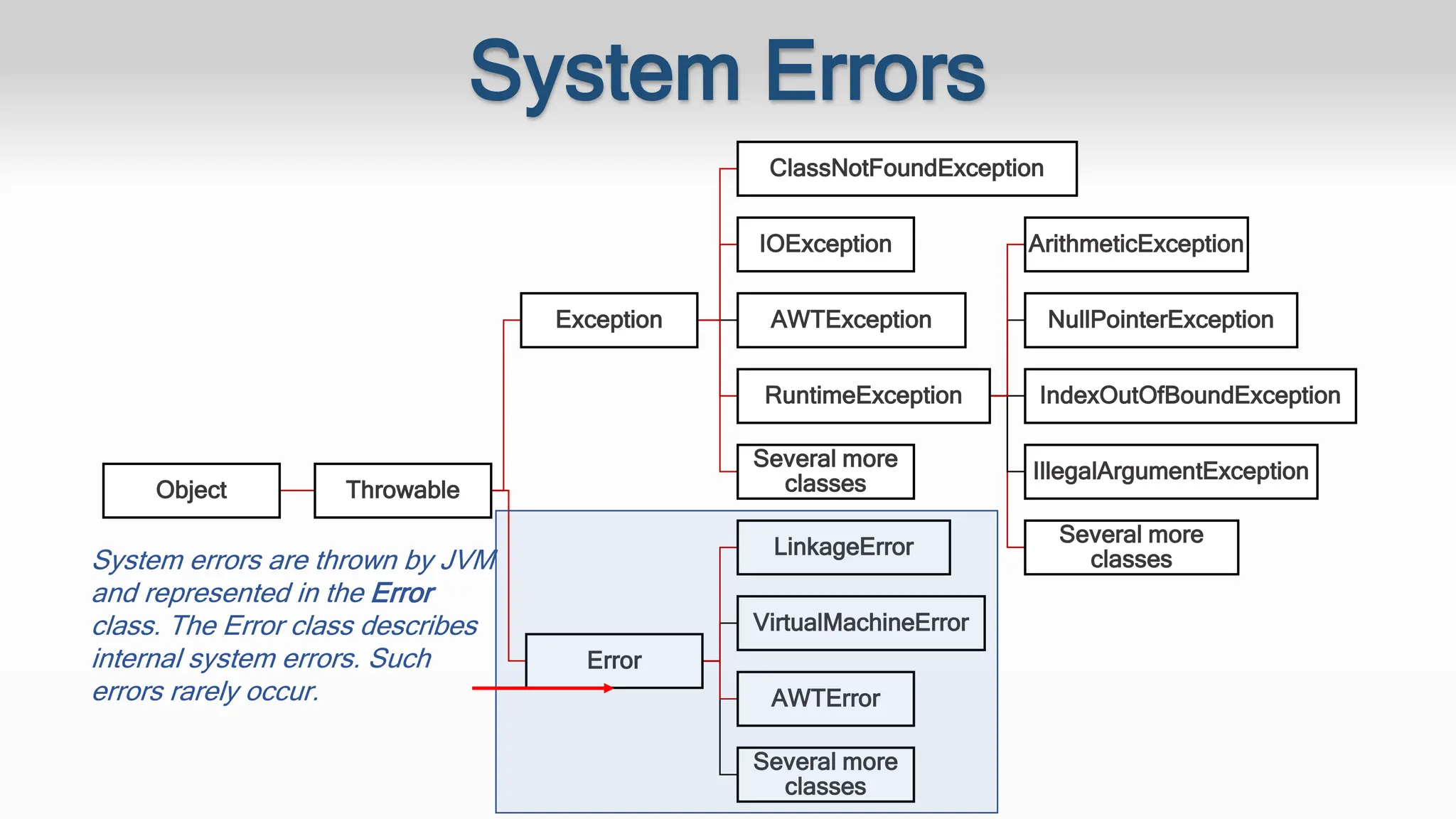
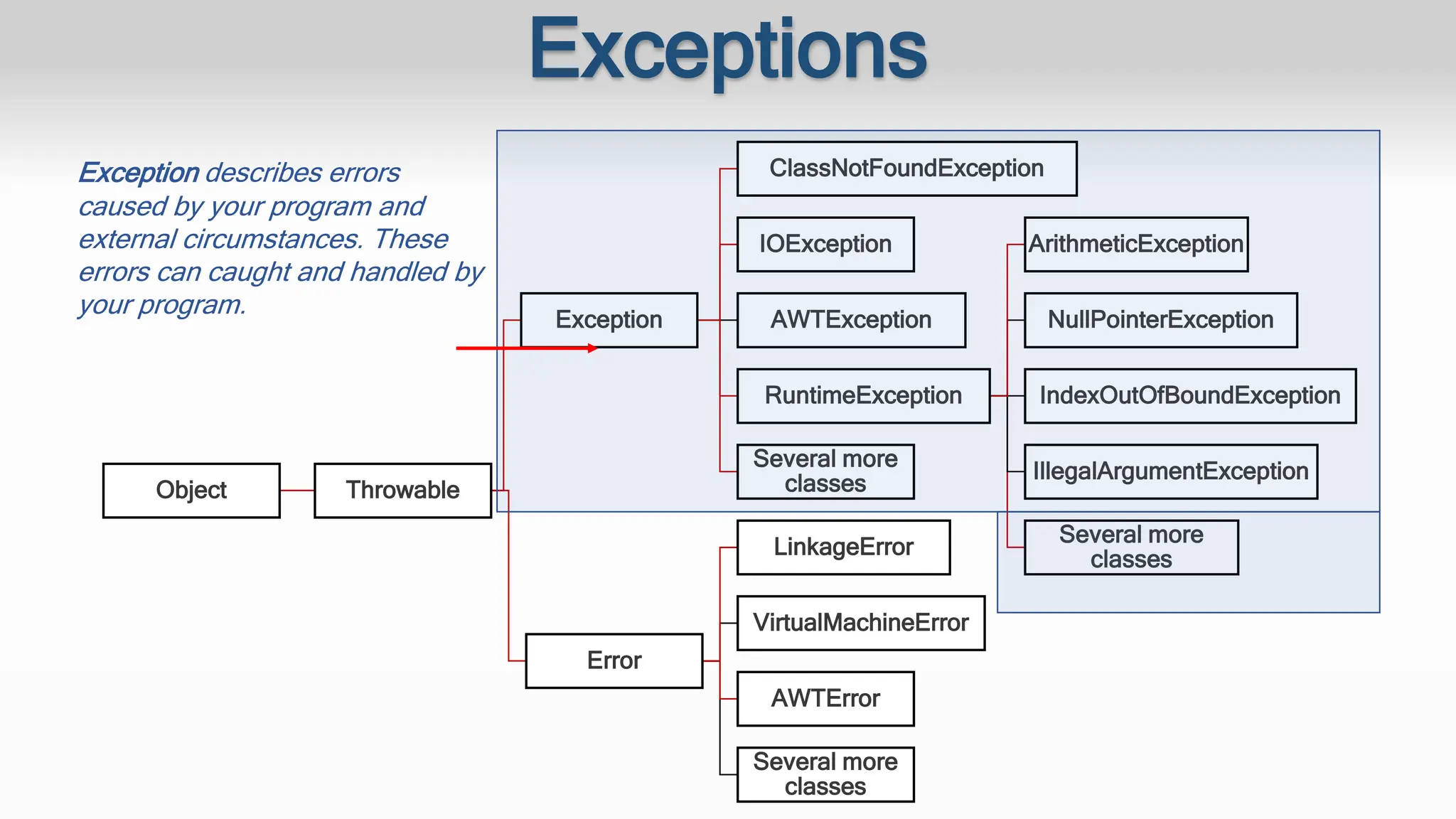
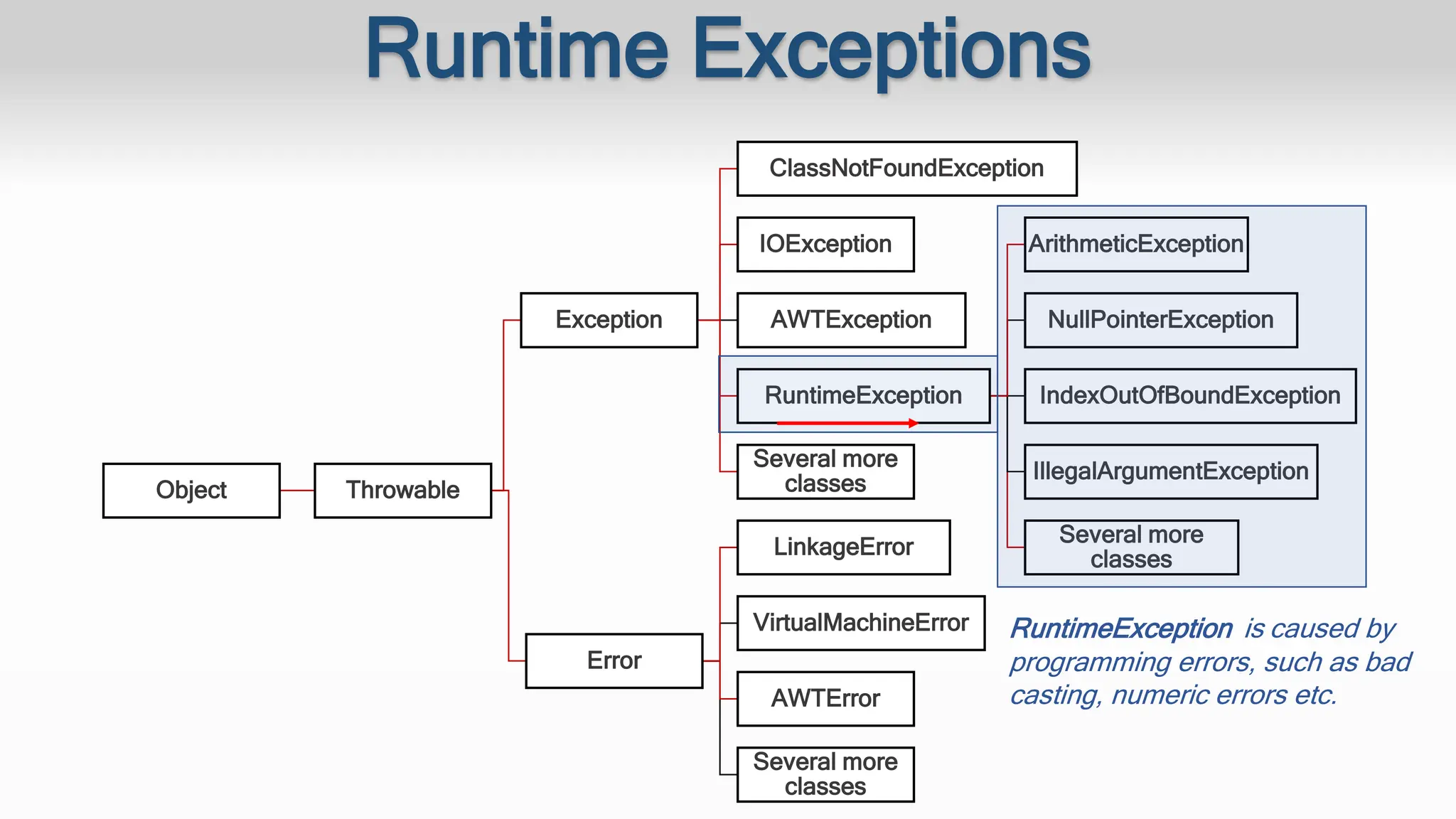
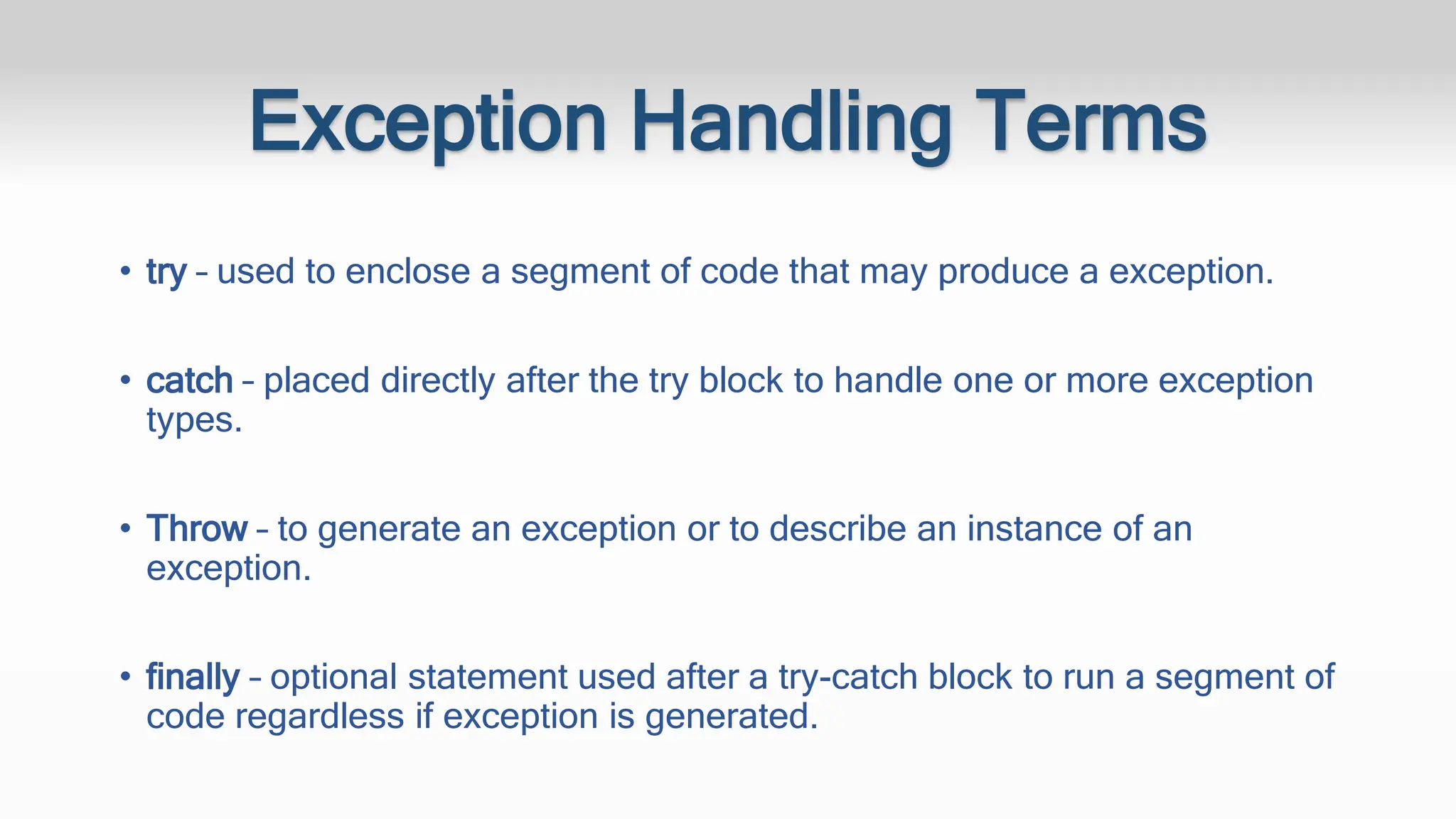
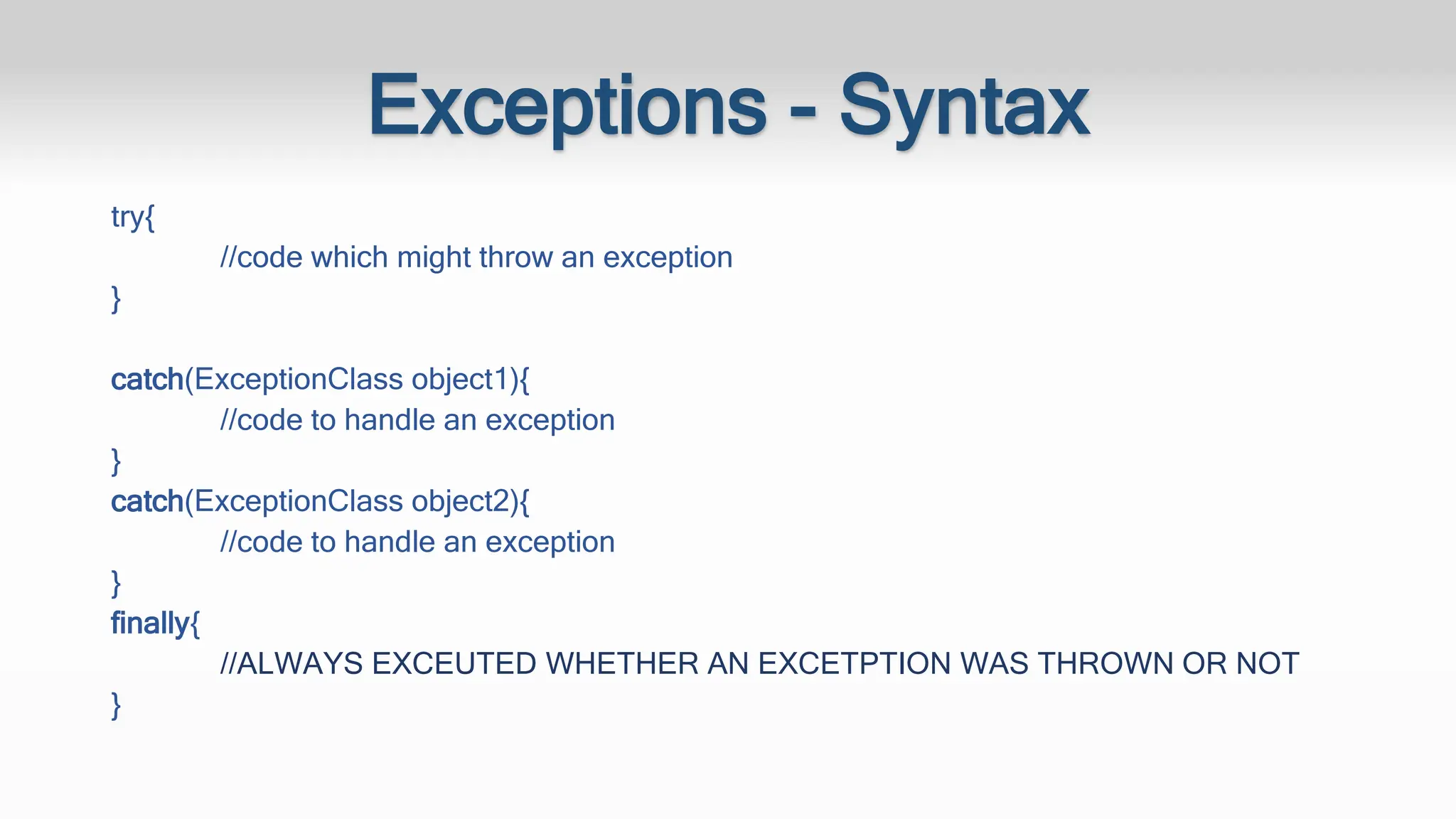
![Class A{ public static void main(String args[]){ int data=50/0; System.out.println(“Rest of the code….”); } } Output: Exception in thread main java.lang.ArithemeticException:/by zero Rest of the code is not executed (rest of the code…) statement is not printed. Example 1.](https://image.slidesharecdn.com/java-exceptionhandling-240205165019-caf3c8ec/75/Java-Exception-Handling-Presentation-2024-12-2048.jpg)
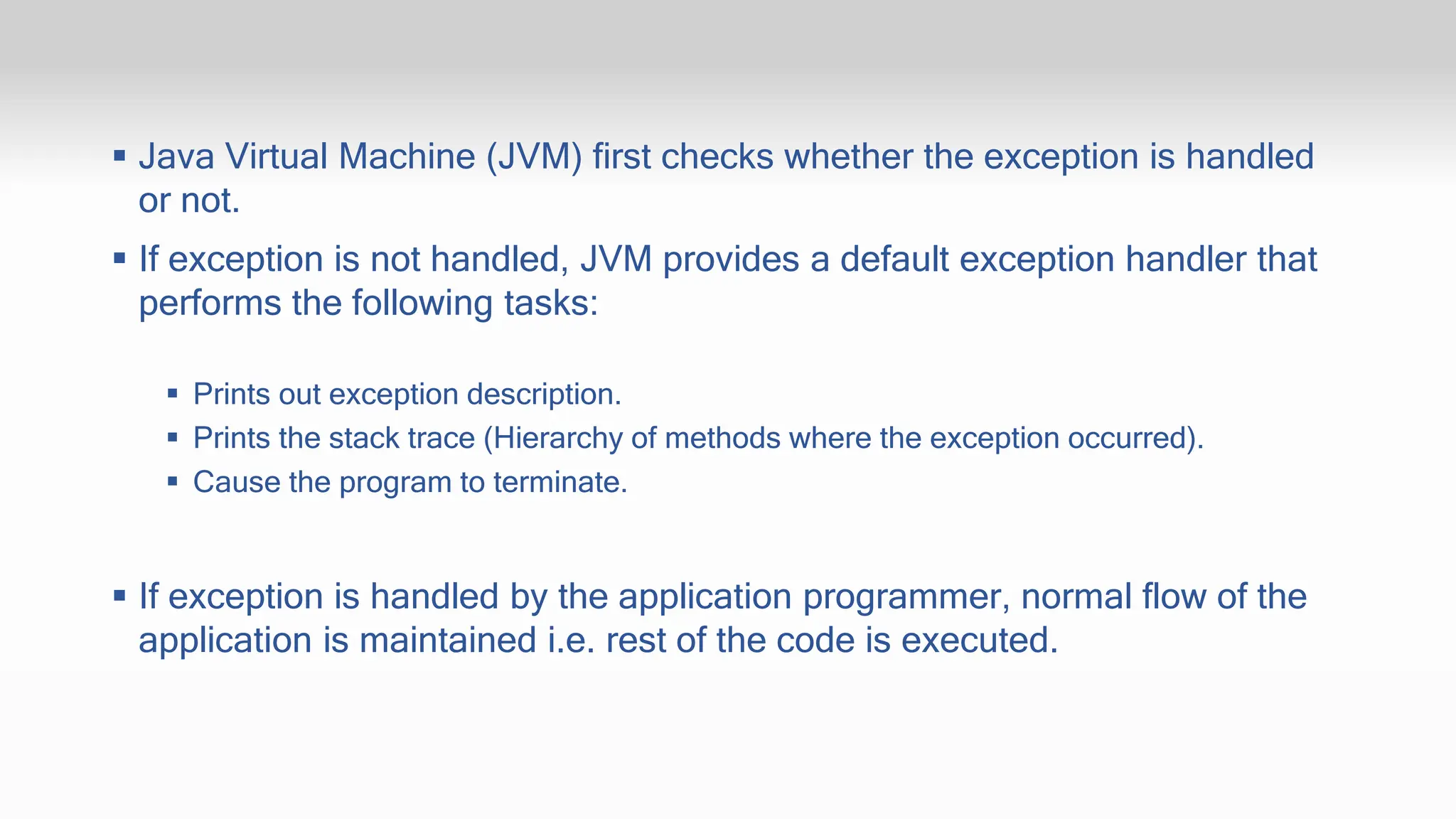
![Example 2. Class A{ Public static void main(String args[]){ try{ int data=50/0; }catch(ArithmeticException e){ System.out.println(e); }System.out.println(“rest of the code…”); } } Output: Exception in thread main java.lang.ArithmeticException:/by zero rest of the code….](https://image.slidesharecdn.com/java-exceptionhandling-240205165019-caf3c8ec/75/Java-Exception-Handling-Presentation-2024-14-2048.jpg)
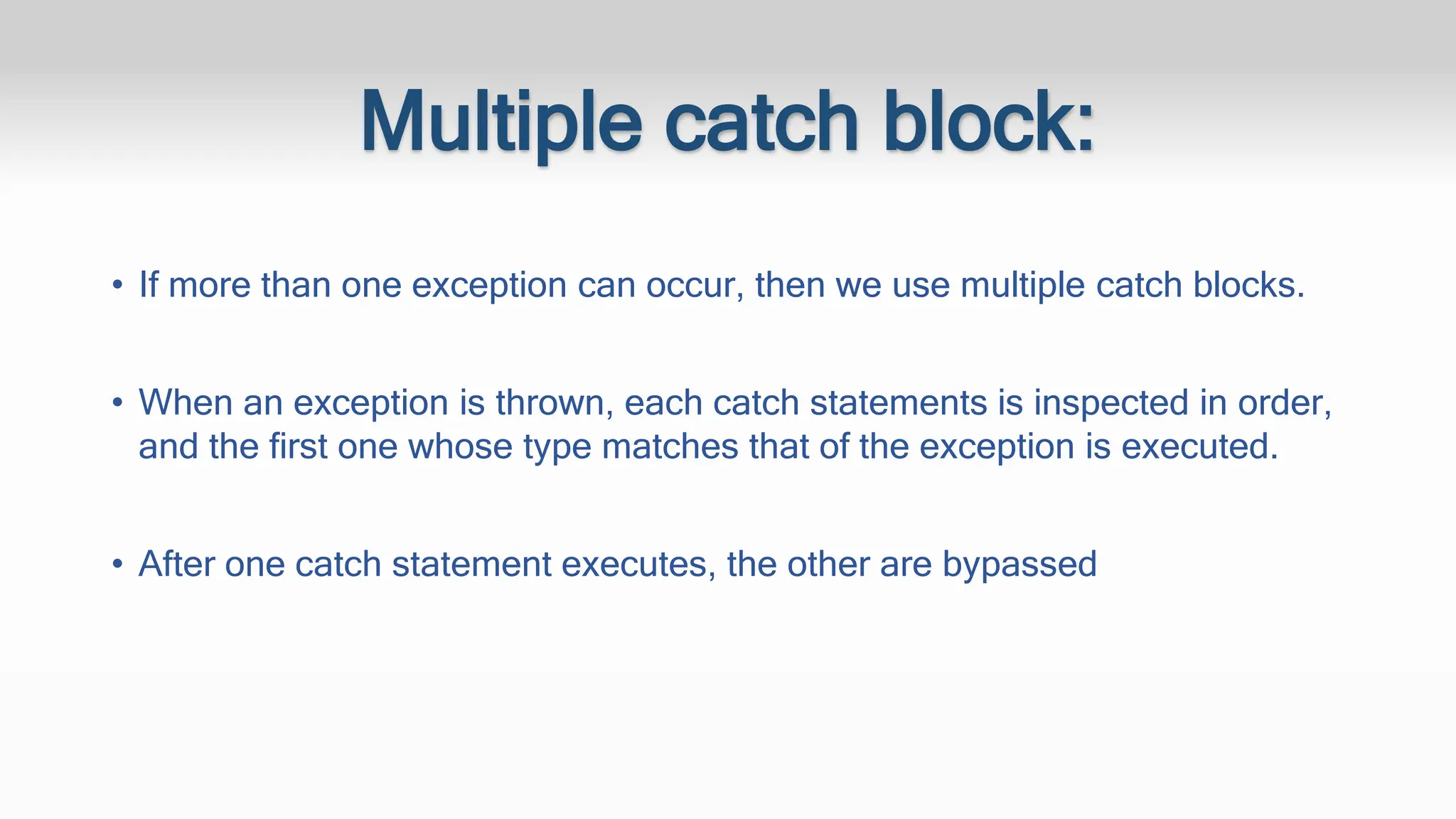
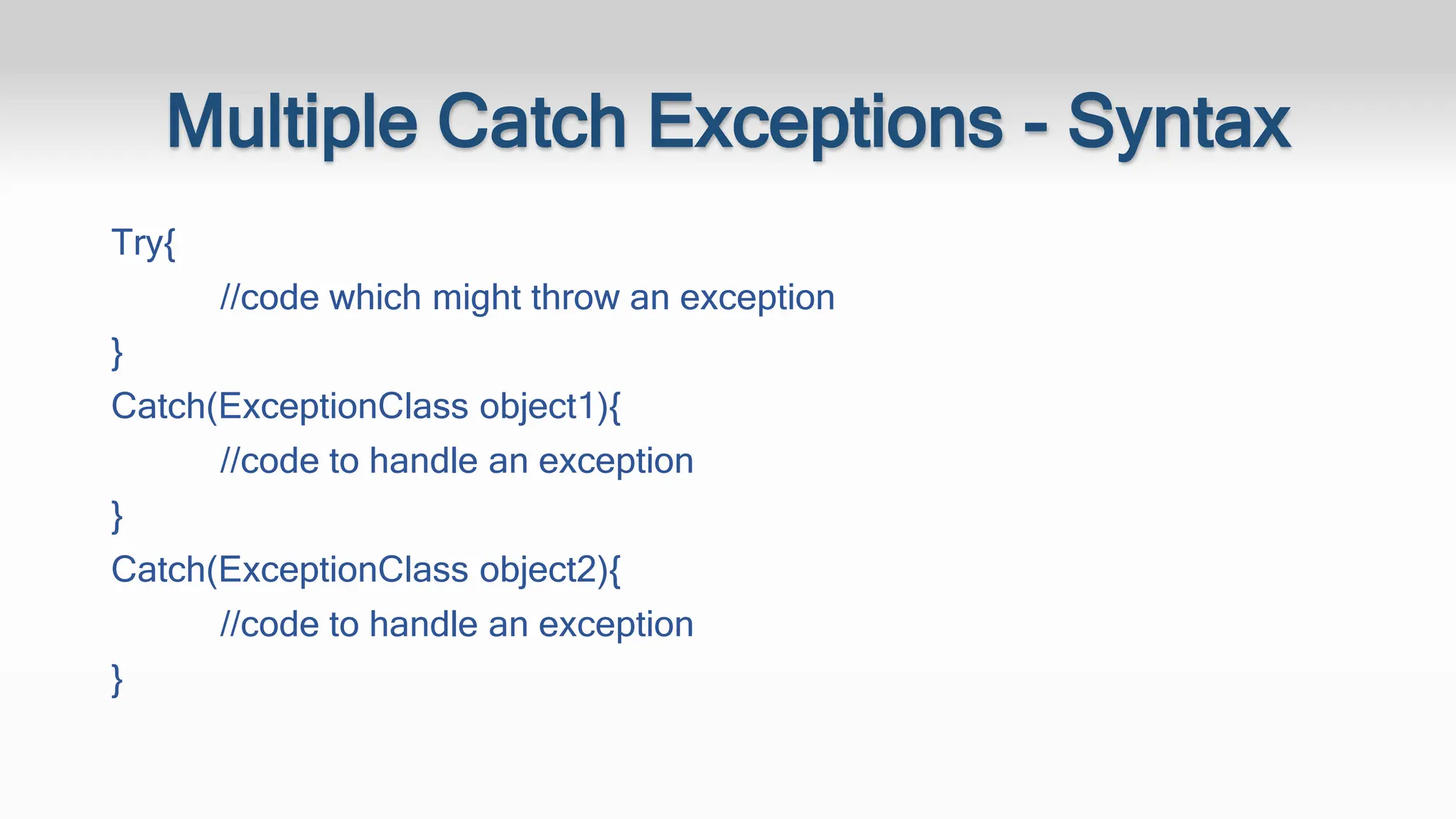
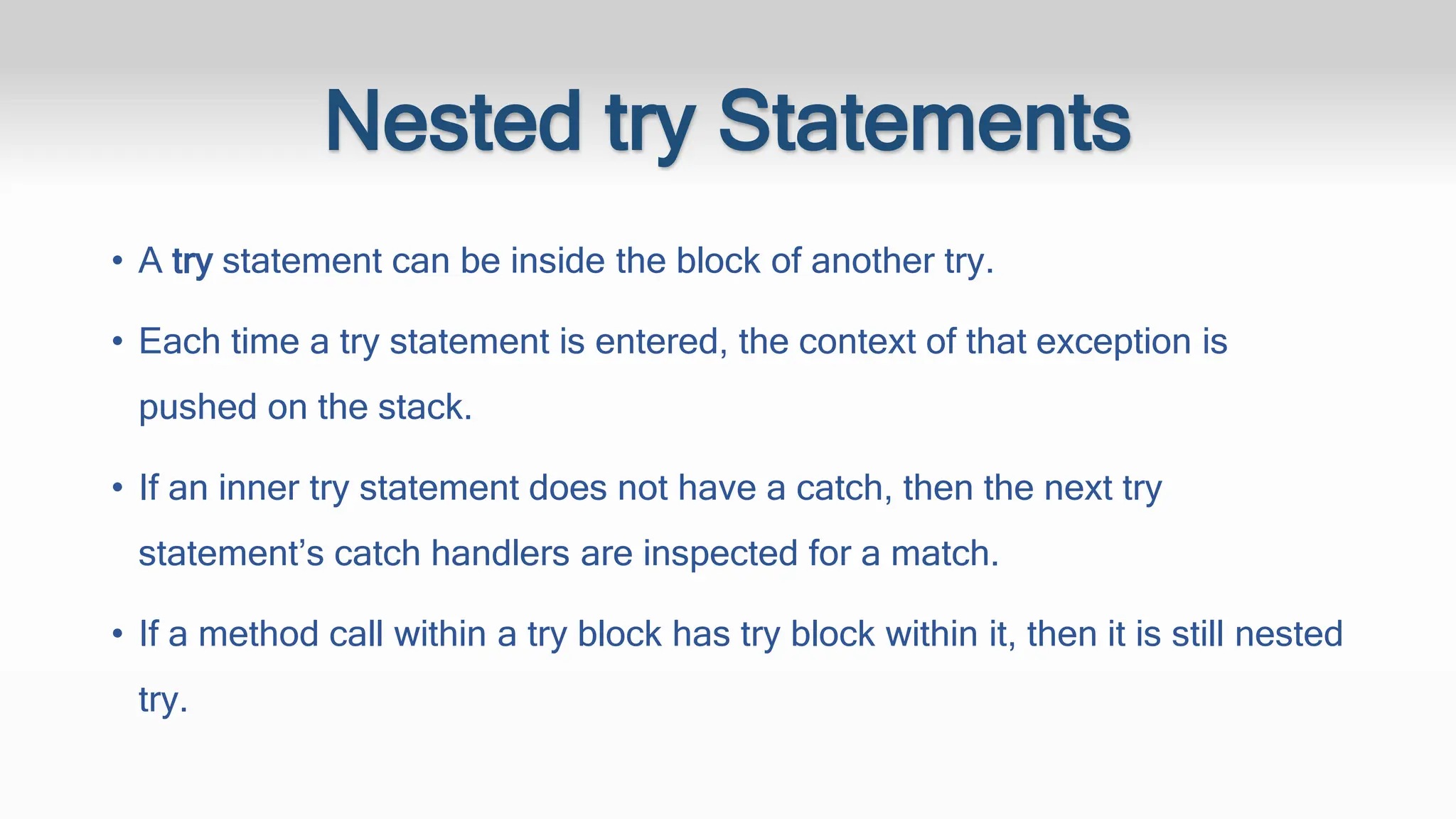
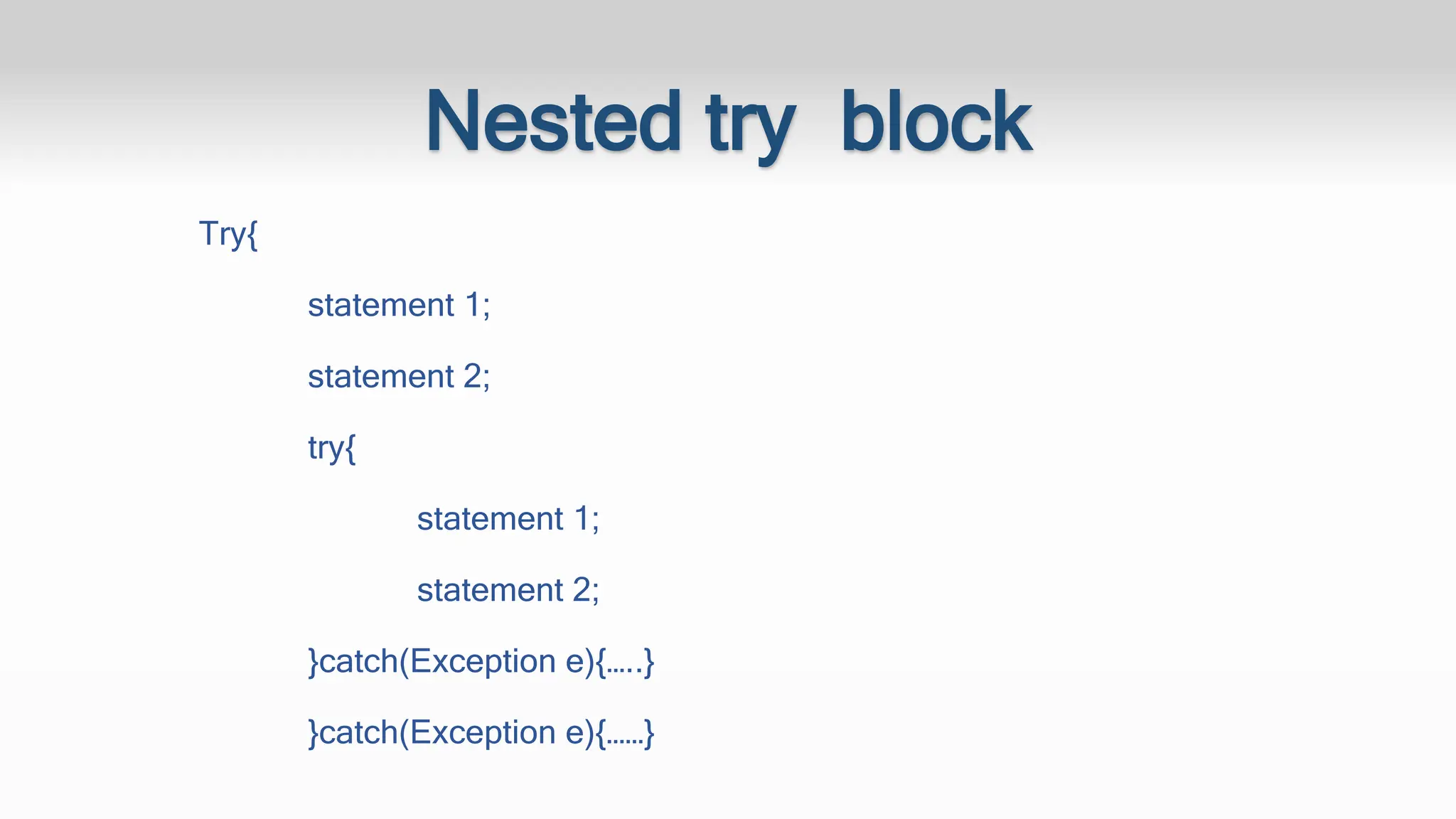
![Example 3. Class A{ public static void main(String args[]){ try{ try{ System.out.println(“going to divide”); int b=39/0; }catch(ArithmeticException e){ System.out.println(e); }try{ int a[]=new int[5]; a[5]=4; }catch(ArrayIndexOutOfBoundException e){ System.out.println(e); } System.out.println(“other statement”); }catch(Exception e){ System.out.println(“handled”); } System.out.println(“normal flow…”); } }](https://image.slidesharecdn.com/java-exceptionhandling-240205165019-caf3c8ec/75/Java-Exception-Handling-Presentation-2024-19-2048.jpg)
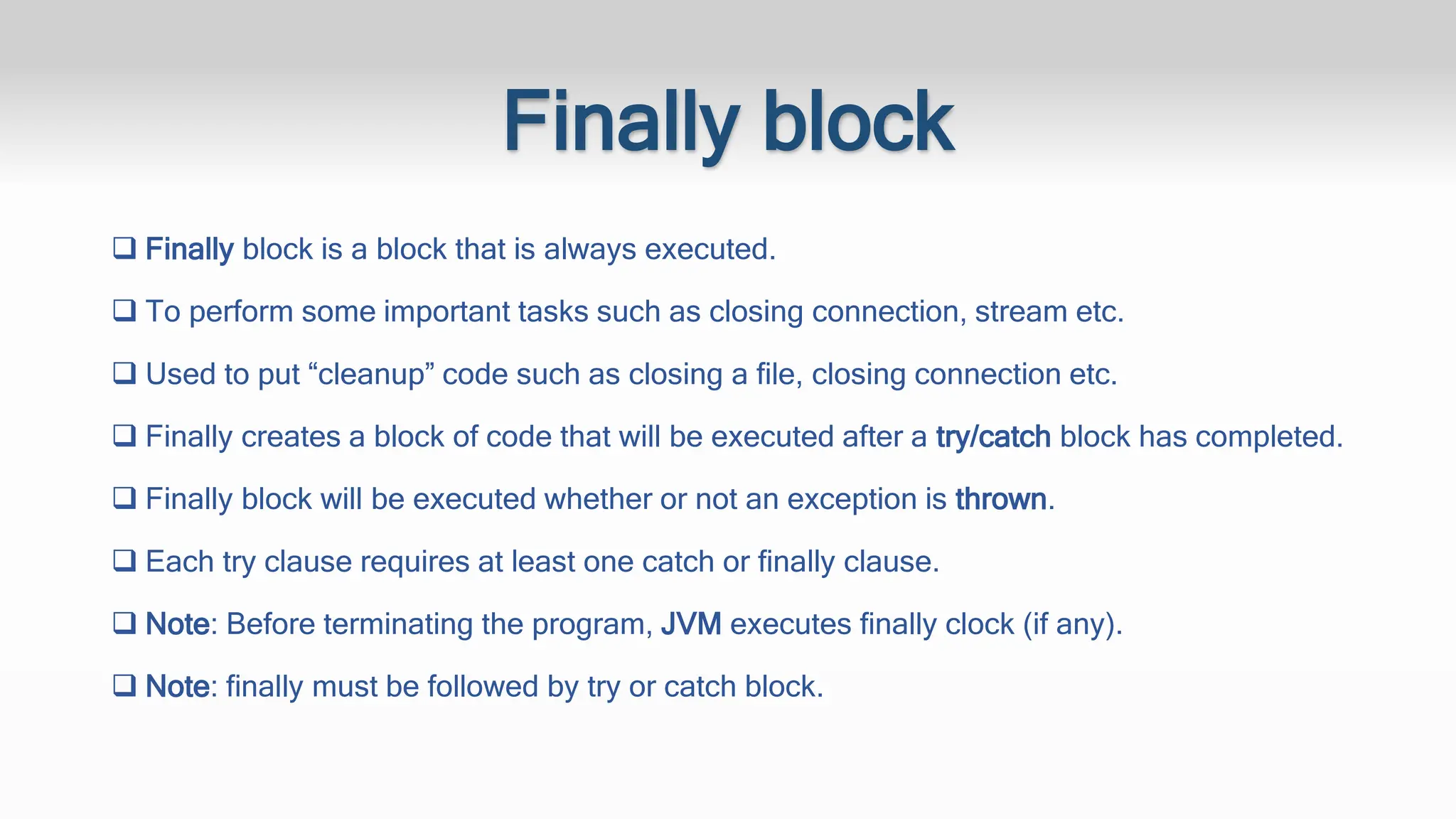
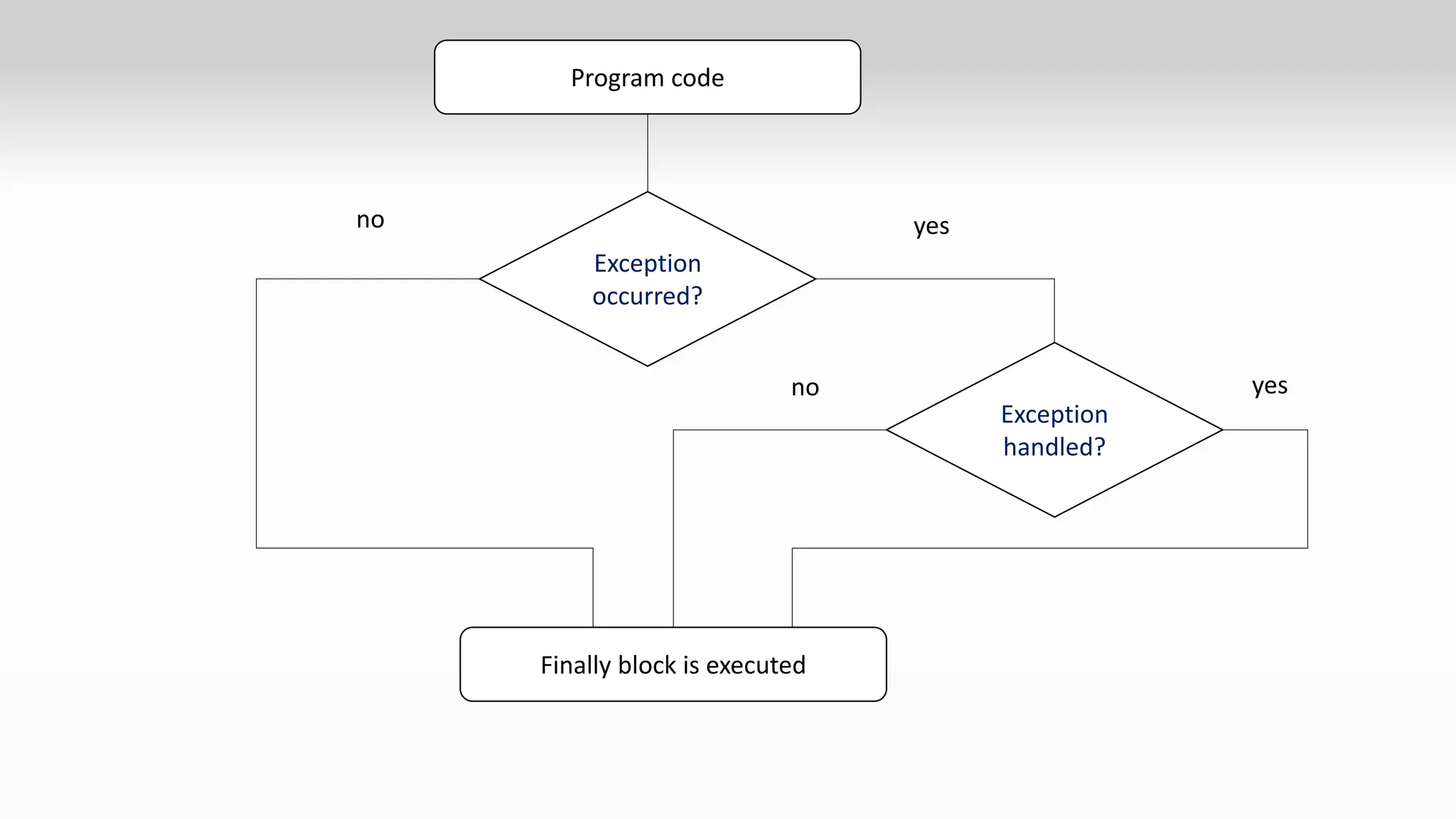
![Example 4. Class A{ Public static void main(String args[]){ try{ int data=25/0; System.out.println(“data”); }catch(ArithmeticException e){ System.out.println(e); }finally{ System.out.println(“rest of the code…”); } }](https://image.slidesharecdn.com/java-exceptionhandling-240205165019-caf3c8ec/75/Java-Exception-Handling-Presentation-2024-22-2048.jpg)
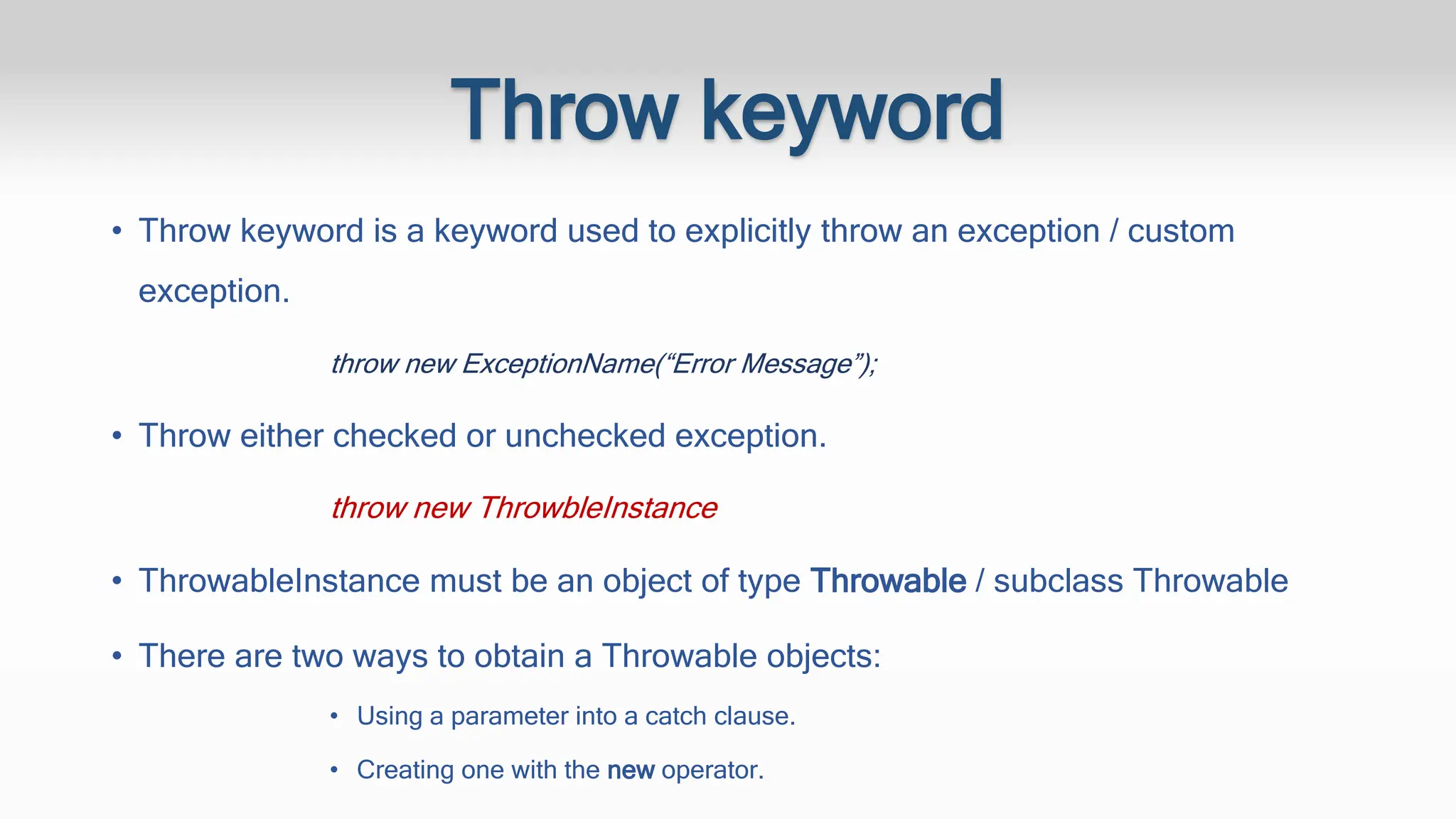
![Example 5. public class bank{ public static void main(String args[]){ int balance = 100, withdraw = 1000; if(balance<withdraw){ //ArithmeticException e = new ArithmeticException(No money please”); //throw r; //throw new ArithmeticException(“No Money”); }else{ System.out.println(“Draw & enjoy Sir/Mam, Best wishes of the day”); } } }](https://image.slidesharecdn.com/java-exceptionhandling-240205165019-caf3c8ec/75/Java-Exception-Handling-Presentation-2024-24-2048.jpg)
![Example 6. Import java.io.*; Public class Example{ public static void main(String args[]) throws IOException{ DataInputStream dis = new DataInputStream(System.in); int x = Integer.parseInt(dis.readLine()); if(x<0){ throw new illegalArgumentException(); throw new illegalArgumentException(“You have entered no”+””+ x +””+”which is less than 0”); }else{ System.out.println(“The no is “+x); } } }](https://image.slidesharecdn.com/java-exceptionhandling-240205165019-caf3c8ec/75/Java-Exception-Handling-Presentation-2024-25-2048.jpg)
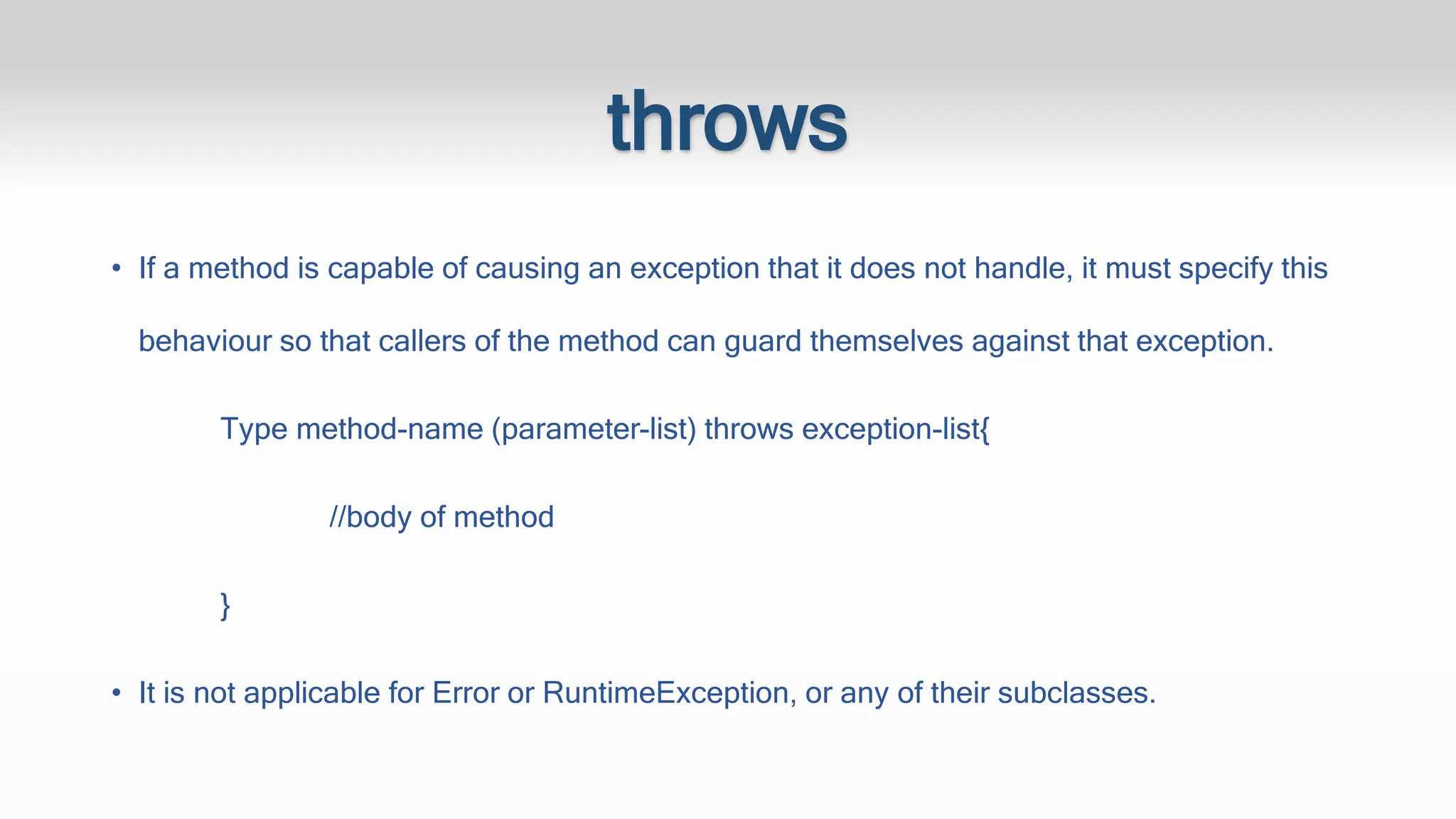
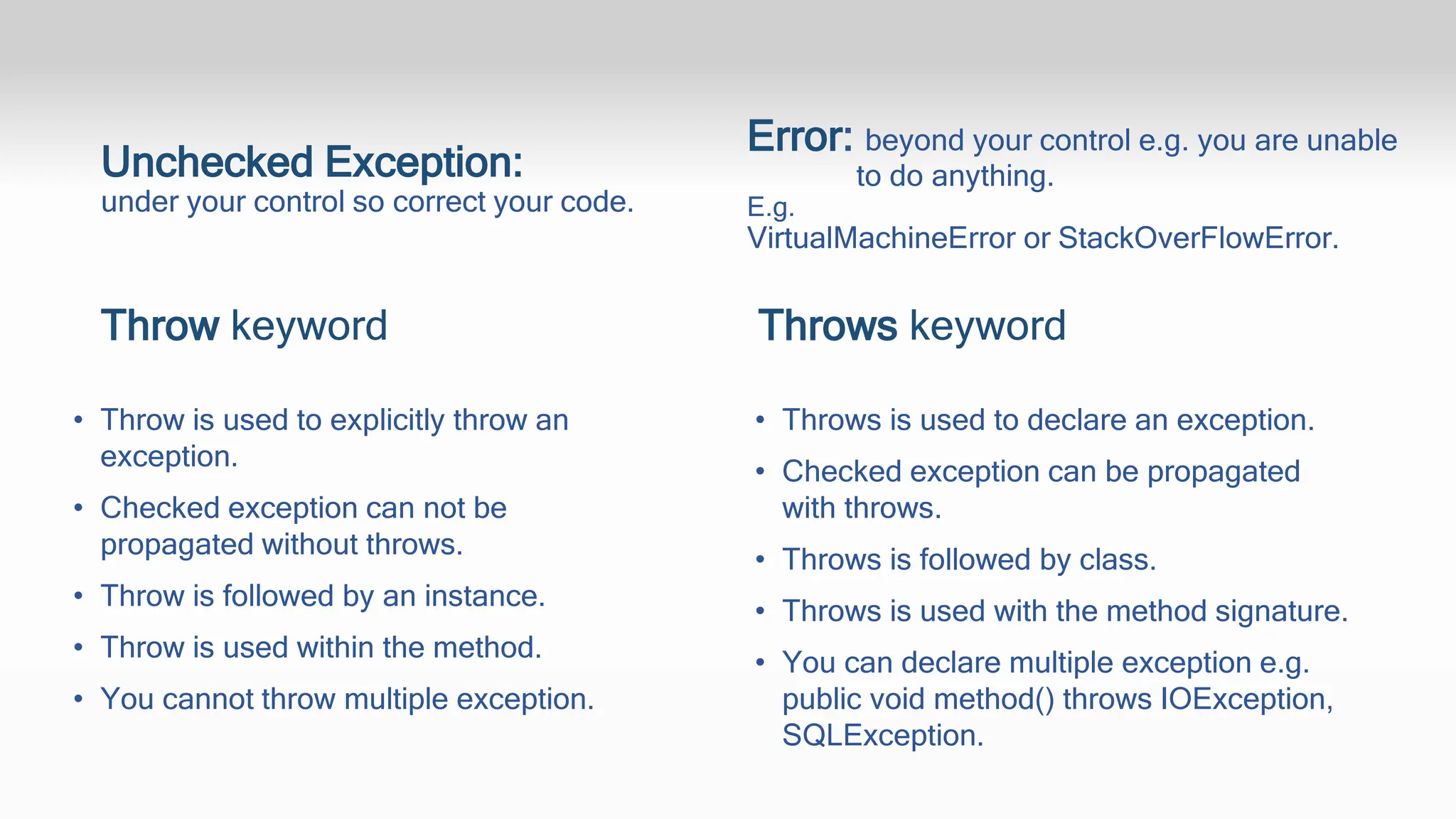
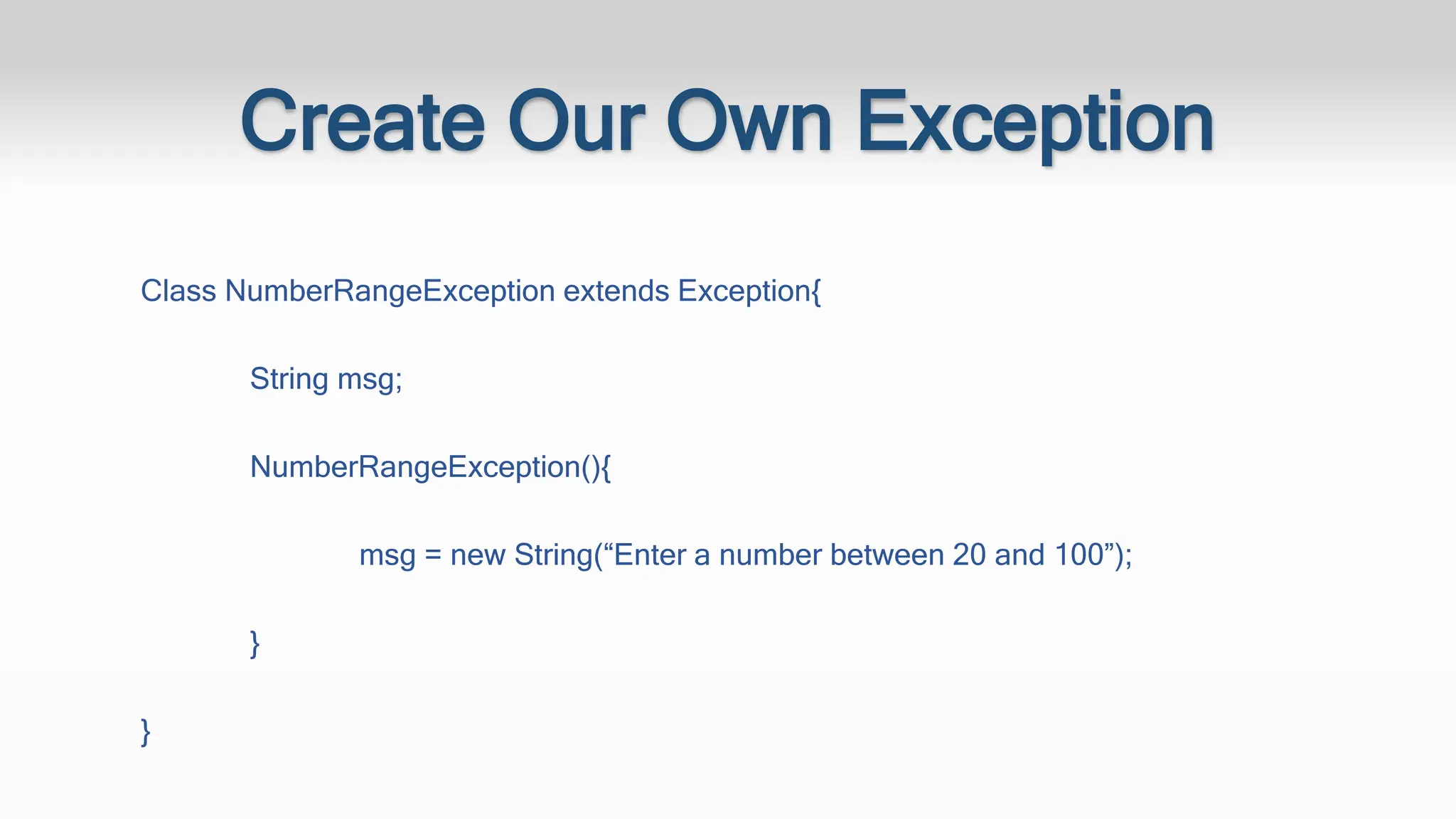
![Public class My_Exception{ public static void main(String args[]){ try{ int x = 10; if(x < 20 || x > 100) throw new NumberRangeException(); }catch(NumberRangeException e){ System.out.println(e); } } }](https://image.slidesharecdn.com/java-exceptionhandling-240205165019-caf3c8ec/75/Java-Exception-Handling-Presentation-2024-29-2048.jpg)
